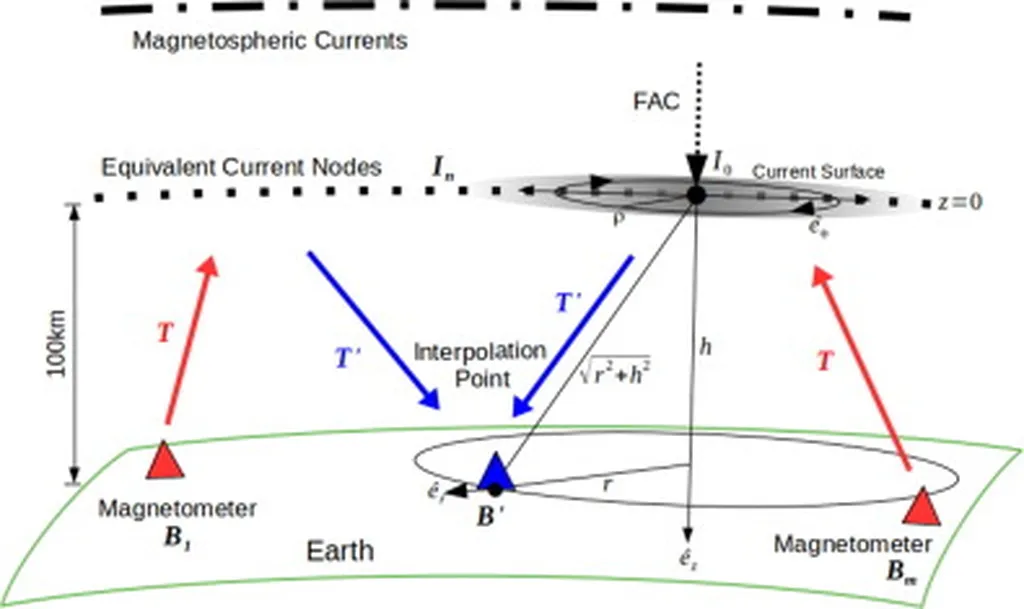In a groundbreaking development poised to revolutionize decision-making in the energy sector, researchers have tackled a longstanding challenge: the scarcity of geomagnetic data. This critical data is essential for mitigating the impact of extreme geophysical events on power lines, communication systems, and railway automation. The study, led by G. R. Vorobeva of the Ufa University of Science and Technology, offers a novel approach to adaptive spatial interpolation, promising to enhance the accuracy of geomagnetic data recovery and, consequently, the resilience of energy infrastructure.
The problem is stark. “The existing geomagnetic data collection infrastructure is incomplete,” Vorobeva explains. “This gap negatively affects decision-making processes aimed at ensuring the security of technosphere objects.” Traditional interpolation methods, which often overlook the unique spatiotemporal characteristics of geomagnetic data and their dependence on external factors, have proven inadequate. Vorobeva’s research introduces an adaptive spatial interpolation approach that dynamically selects the most effective interpolation methods based on specific factors, such as latitude zones and geomagnetic activity.
To validate this approach, Vorobeva and her team developed a prototype web-based application and conducted experiments using geomagnetic data from the SuperMAG project. The results were compelling. The adaptive interpolation method outperformed standard techniques, demonstrating lower root-mean-square errors. This advancement could significantly improve the accuracy of geomagnetic data recovery, offering energy companies a more reliable tool to predict and mitigate the impacts of geomagnetic storms on their infrastructure.
The implications for the energy sector are profound. Accurate geomagnetic data is crucial for protecting power grids from geomagnetic-induced currents (GICs), which can cause transformer failures and blackouts. By providing more precise data, Vorobeva’s method could help energy companies implement more effective protective measures, reducing downtime and preventing costly damage. “This approach can be a game-changer for energy companies,” Vorobeva states. “It offers a more accurate and reliable way to assess geomagnetic risks, ultimately enhancing the resilience of our energy infrastructure.”
The research, published in the journal “Научно-технический вестник информационных технологий, механики и оптики” (Scientific and Technical Bulletin of Information Technologies, Mechanics and Optics), marks a significant step forward in the field of geospatial data analysis. While the study focused on geomagnetic data, the adaptive interpolation approach has broader applications. “For different types of data, preliminary analysis will be required to identify significant factors,” Vorobeva notes. “But the potential is vast.”
As the energy sector continues to grapple with the challenges posed by extreme geophysical events, Vorobeva’s research offers a beacon of hope. By providing more accurate and reliable geomagnetic data, this innovative approach could shape the future of energy infrastructure, making it more resilient and secure. The journey towards a more robust energy future has just begun, and Vorobeva’s work is leading the way.

